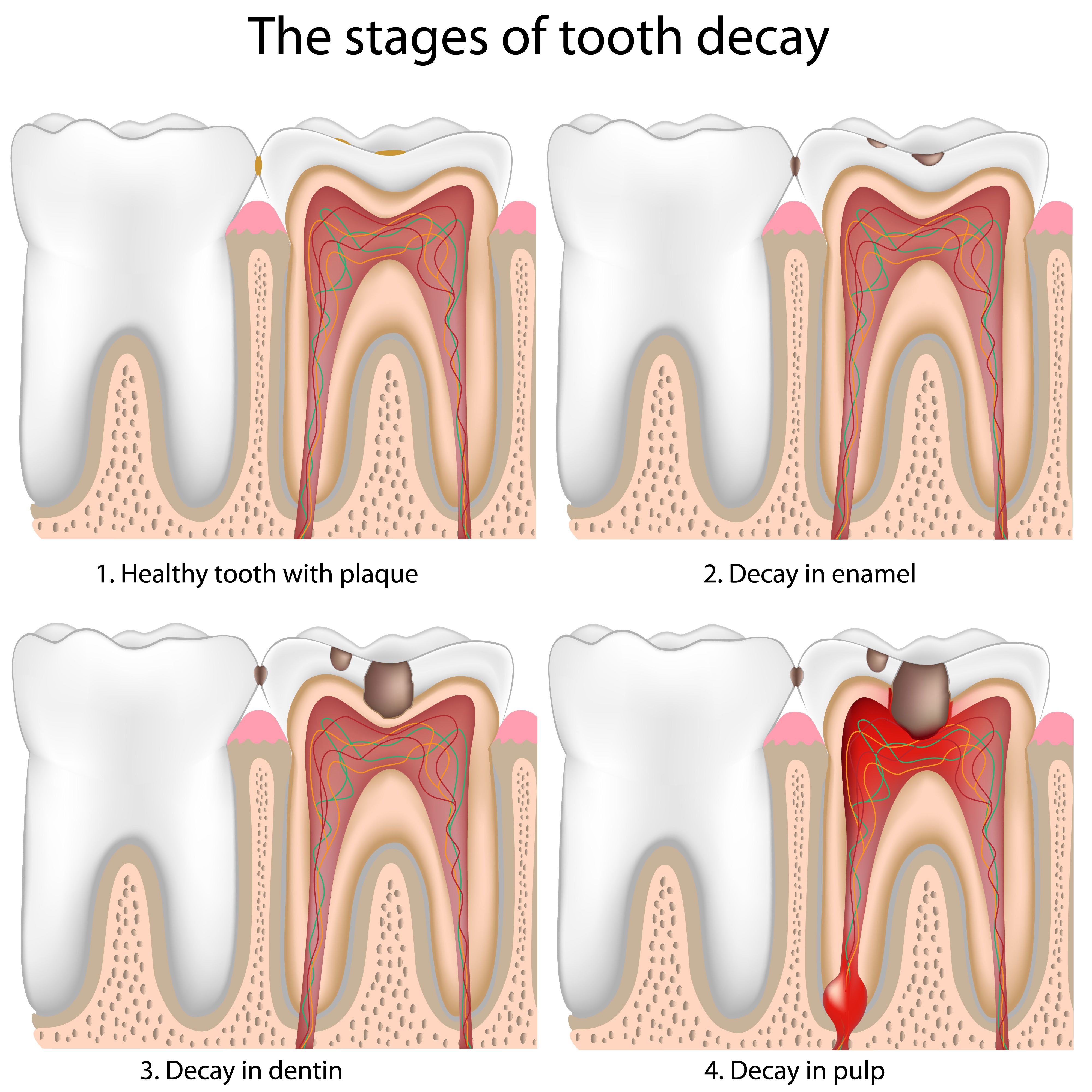Stages of Tooth Decay
 Tooth decay results in cavities and root canal infections, both of which require timely professional restorative dentistry treatment to prevent further damage to the tooth. To prevent tooth decay, patients should brush the teeth twice a day, floss once a day, and visit the dentist every six months.
Tooth decay results in cavities and root canal infections, both of which require timely professional restorative dentistry treatment to prevent further damage to the tooth. To prevent tooth decay, patients should brush the teeth twice a day, floss once a day, and visit the dentist every six months.
At the Center for Dental Excellence, Dr. Edward Narcisi works with patients to help them maintain good oral health. However, even when patients exercise good dental hygiene habits, tooth decay can still develop.
In this blog post, we discuss the stages of tooth decay. To learn more, contact our Pittsburgh, PA practice today.
Plaque Build-up
Tooth decay is caused by plaque build-up, which attracts bacteria that feed on plaque on the teeth. The bacteria emit acids, which damage the natural tooth structure over time. If plaque and bacteria are left on the teeth, they will eventually create a hole in the tooth, known as a dental cavity.
Decay in Enamel
In the early stages of tooth decay, bacteria create a hole in the enamel of the tooth. The enamel is the translucent outer layer of the tooth that protects the softer and more vulnerable inner structures of the teeth. Although the thickness of the enamel varies from 0.5 to 2.5 millimeters depending on the location on the tooth, it is second hardest compound on earth, ranking just behind diamonds.
When tooth decay only affects the enamel layer of the tooth, it can be easily treated with a tooth-colored dental filling. The filling seals the hole and prevents the infection from reaching inside of the tooth.
Decay in Dentin
When bacteria wear through the outer layer of enamel, the underlying dentin layer of the tooth is exposed. Dentin is the white part of the tooth that gives the tooth its color. It is not as hard as enamel, but it is thicker, and it also provides protection to the inner soft tissues of the tooth.
When tooth decay reaches the dentin layer of the tooth, the cavity grows in size, often resulting in the need for more aggressive treatment. If a filling is no longer sufficient, an inlay, onlay, or crown may be used to lend additional strength to the damaged tooth.
Decay in the Pulp
Once bacteria wear through the dentin layer of the tooth, they reach the central canals of the tooth, which contain dental pulp. Dental pulp consists of nerves, blood vessels, and soft tissue within the center of the tooth. When the pulp becomes infected, it can cause pain, abscesses, and swelling of the gums.
A root canal infection can result in the loss of the tooth if it is not treated quickly. Eventually, the infection will result in bone and root loss.
To save the tooth, we can perform root canal therapy, in which the root canals are cleaned out and all infected tissues removed with dental files. Next, the empty root canals are filled with a rubber-like substance called gutta percha. In most cases, the tooth is capped with a crown after root canal treatment is complete.
To undergo treatment for tooth decay, contact the Center for Dental Excellence today.


